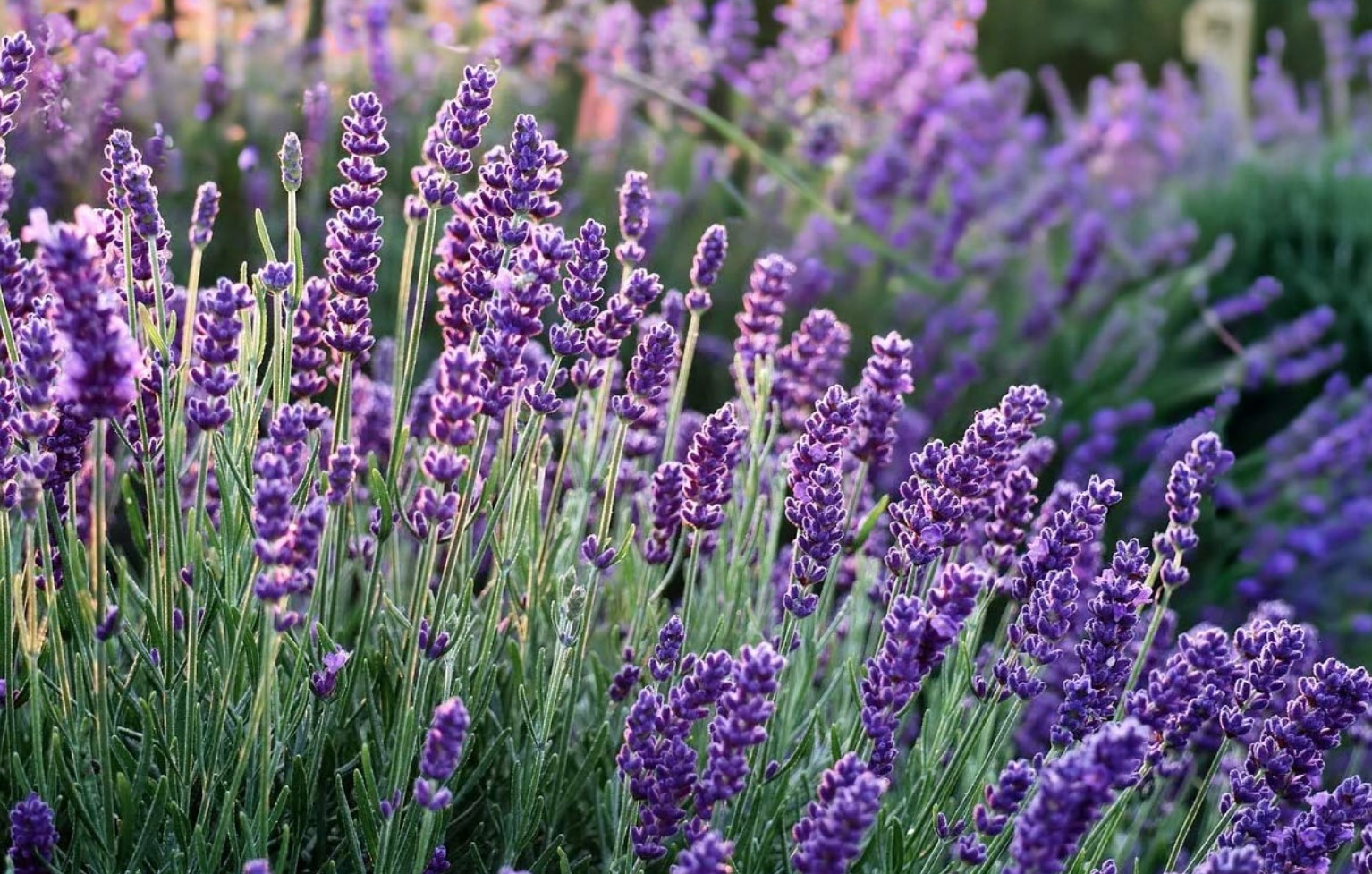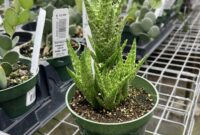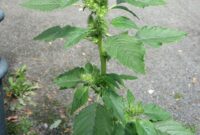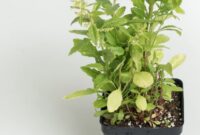
Lavandula x intermedia, often referred to as Dutch lavender or hybrid lavender, is a popular choice for gardeners seeking a hardy and fragrant addition to their landscapes. This hybrid lavender offers a delightful blend of beauty and practicality, making it a versatile plant for various applications.
What is Lavandula x intermedia?
Lavandula x intermedia is a hybrid lavender that results from the crossbreeding of Lavandula angustifolia (English lavender) and Lavandula latifolia (spike lavender). This hybridization has led to a plant that is more robust, cold-tolerant, and produces longer flower spikes than its parent species.
Growing Lavandula x intermedia
Growing Lavandula x intermedia is relatively straightforward, but there are a few key factors to consider:
- Sunlight: These plants thrive in full sun, so choose a location that receives at least 6-8 hours of direct sunlight daily.
- Soil: Well-draining soil is essential for Lavandula x intermedia. Avoid heavy clay soils, as they can lead to root rot. A sandy or loamy soil with a pH between 6.5 and 7.5 is ideal.
- Watering: While young plants may require regular watering, established plants are drought-tolerant. Water deeply and infrequently, allowing the soil to dry out slightly between waterings.
- Fertilizing: Lavandula x intermedia generally doesn’t require heavy fertilization. However, you can apply a balanced, slow-release fertilizer in early spring to promote healthy growth and flowering.
Lavandula x intermedia vs. Lavandula angustifolia
While both Lavandula x intermedia and Lavandula angustifolia are popular lavender varieties, there are some key differences:
- Hardiness: Lavandula x intermedia is generally more cold-tolerant than Lavandula angustifolia.
- Flower Spikes: Lavandula x intermedia typically produces longer flower spikes.
- Fragrance: Lavandula x intermedia often has a stronger, more camphorous fragrance compared to Lavandula angustifolia.
Lavandula x intermedia Uses
Lavandula x intermedia is a versatile plant with a variety of uses:
- Landscaping: Its attractive foliage and fragrant flowers make it a popular choice for borders, hedges, and rock gardens.
- Culinary Uses: The flowers and leaves can be used to flavor dishes, teas, and desserts.
- Aromatherapy: Lavender essential oil, derived from Lavandula x intermedia, is widely used in aromatherapy for its calming and relaxing properties.
- Insect Repellent: The strong scent of lavender can help deter pests like mosquitoes and moths.
Lavandula x intermedia Hybrid
As a hybrid plant, Lavandula x intermedia can exhibit a wide range of characteristics. Some popular cultivars include:
- Hidcote Blue: Known for its deep blue-purple flowers and compact growth habit.
- Grosso: A vigorous variety with long, silvery-gray leaves and dense flower spikes.
- Dutch Lavender: A popular cultivar with long, silvery-gray leaves and fragrant, purple-blue flowers.
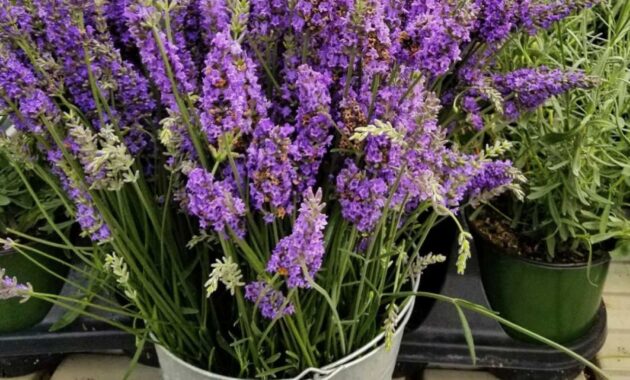
Lavandula x intermedia for Landscaping
Lavandula x intermedia can be used in various landscaping applications:
- Borders and Edging: Plant in rows along garden paths or borders for a striking visual effect.
- Hedges: Create low-maintenance hedges by planting Lavandula x intermedia in dense rows.
- Rock Gardens: Its drought tolerance makes it a perfect choice for rock gardens.
- Container Gardening: Grow in pots or containers to add fragrance and beauty to patios and balconies.
Lavandula x intermedia Pruning Guide
Pruning Lavandula x intermedia is essential for maintaining its shape and promoting healthy growth:
- Post-Flowering Pruning: After the plant has finished flowering, prune back the stems by about one-third to encourage new growth and prevent legginess.
- Spring Pruning: In early spring, before new growth emerges, prune the plant more heavily to rejuvenate it. Remove any dead or damaged stems and shape the plant as desired.
Best Soil for Lavandula x intermedia
Well-draining soil is crucial for the health of Lavandula x intermedia. A sandy or loamy soil with a pH between 6.5 and 7.5 is ideal. If your soil is heavy clay, you can improve drainage by adding compost or sand.
Lavandula x intermedia Flowering Season
Lavandula x intermedia typically flowers in late spring or early summer, producing fragrant spikes of purple, blue, or pink flowers.
Lavandula x intermedia Hardiness Zones
Lavandula x intermedia is generally hardy in USDA hardiness zones 5-9. However, specific cultivars may have different hardiness ratings.
Lavandula x intermedia Benefits for Pollinators
Lavandula x intermedia is a valuable plant for pollinators, such as bees and butterflies. Its fragrant flowers provide a rich source of nectar and pollen, supporting these beneficial insects.
Lavandula x intermedia Fragrance
One of the most appealing aspects of Lavandula x intermedia is its delightful fragrance. The strong, aromatic scent of lavender can help to create a calming and relaxing atmosphere in your garden.
Propagating Lavandula x intermedia
Lavandula x intermedia can be propagated through various methods:
- Seed Propagation: While possible, seed propagation can be time-consuming and may not produce plants identical to the parent plant.
- Cutting Propagation: This is the most common method of propagation. Take stem cuttings in late spring or early summer, remove the lower leaves, and dip the cut end in rooting hormone. Plant the cuttings in a well-draining potting mix and keep them moist but not soggy.
- Division: Established plants can be divided in early spring. Carefully dig up the plant and divide it into smaller sections, each with roots and shoots. Replant the divisions in well-prepared soil.
Lavandula x intermedia vs. English Lavender
While Lavandula x intermedia and English lavender (Lavandula angustifolia) are closely related, there are some key differences:
- Hardiness: Lavandula x intermedia is generally more cold-tolerant than English lavender.
- Flower Spikes: Lavandula x intermedia typically produces longer flower spikes.
- Fragrance: Lavandula x intermedia often has a stronger, more camphorous fragrance compared to English lavender.
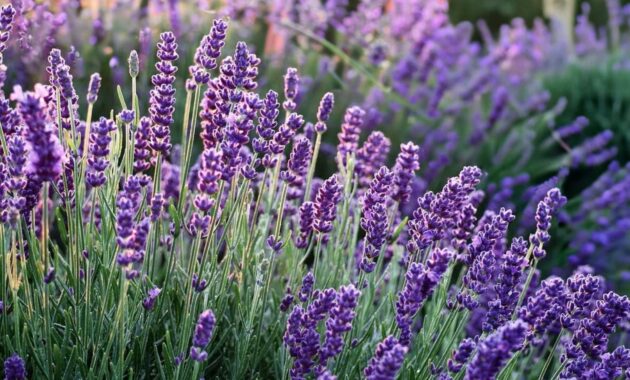
How to Grow Lavandula x intermedia from Cuttings
- Choose a Healthy Cutting: Select a non-flowering stem that is about 6-8 inches long.
- Prepare the Cutting: Remove the lower leaves, leaving a few at the top.
- Dip in Rooting Hormone: Dip the cut end of the stem in rooting hormone to encourage root development.
- Plant the Cutting: Plant the cutting in a well-draining potting mix, ensuring that the nodes are buried.
- Provide Optimal Conditions: Place the pot in a warm, bright location, but avoid direct sunlight. Keep the soil moist but not waterlogged.
- Monitor for Root Development: After a few weeks, check for root development by gently tugging on the cutting. If it resists, roots have formed.
- Potting Up: Once the roots have developed, transplant the cutting into a larger pot with fresh potting mix.
- Hardening Off: Gradually acclimate the young plant to outdoor conditions by placing it outside for increasing periods of time.
- Planting Outdoors: Once the risk of frost has passed, plant the young lavender plant in a sunny location with well-draining soil.
Conclusion
Lavandula x intermedia is a versatile and beautiful plant that can add fragrance and color to any garden. With its hardiness, drought tolerance, and stunning flower spikes, it’s a popular choice for both novice and experienced gardeners. By following the tips provided in this guide, you can successfully grow and enjoy this wonderful plant.
FAQs
- Can I grow Lavandula x intermedia in a pot?
Yes, Lavandula x intermedia can be grown in pots. Choose a pot with drainage holes and use a well-draining potting mix. - How often should I prune my Lavandula x intermedia?
Prune your Lavandula x intermedia twice a year: once after flowering to encourage new growth and once in early spring to shape the plant. - Can I use lavender essential oil from Lavandula x intermedia for aromatherapy?
Yes, lavender essential oil derived from Lavandula x intermedia is commonly used in aromatherapy for its calming and relaxing properties. - What are some common pests and diseases that affect Lavandula x intermedia?
Lavandula x intermedia is generally resistant to pests and diseases. However, it can be susceptible to root rot in poorly draining soil. - Can I use dried lavender from Lavandula x intermedia in potpourri?
Yes, dried lavender flowers from Lavandula x intermedia can be used to create fragrant potpourri.
